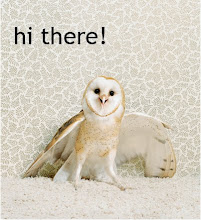Me gustó mucho el libro, y me sentí particularmente muy identificada con esta parte, es muy yo...
VII
¿Me atrevere a indicar por ultimo, un rasgo de mi caracter que me ha ocasionado bastantes dificultades y contratiempos en mis relaciones con los hombres?
Estoy dotado de una impresionabilidad tan inquietante respecto de la limpieza, que me hace notar fisiologicamente lo mas intimo, lo mas oculto del espiritu de lo que se ponga frente a mi.
Lo olfateo.
Gracias a esta impresionabilidad, tengo una especie de antenas psicologicas, con ayuda de las cuales puedo tentar y palpar toda clase de misterios.
La podredumbre escondida en el fondo de ciertos temperamentos, y que tal vez proceda de algun vicio de la sangre disimulado por la educación, la percibo desde el primer contacto. Tambien he observado que este género de temperamentos, incompatible con mi sentimiento de la limpieza, adivina en seguida mi desconfianza. Lo cual no les libra de oler mal.
Así, pues, he adquirido a costumbre -para mi la pureza absoluta (mía, y en torno mío) es una necesidad vital; en medio de una existencia de condiciones dudosas no puedo vivir- de bañarme, de nadar constantemente en el agua clara o en cualquier otro elemento transparente, lleno de claridad.
Por eso mi paciencia se ha visto en muy duras pruebas en mis relaciones con las personas.
Mi "humanismo" no consiste en simpatizar con el projimo, sino en soportarlo junto a mi. Mi humanismo es una constante autovictoria.
De aqui la imperiosa necesidad de la soledad, es decir, del retorno a la salud, del retorno a mi mismo. Tengo necesidad del aire libre.
jueves, 20 de mayo de 2010
miércoles, 19 de mayo de 2010
Concerts on my bucket list
Antes de ayer ví a Aerosmith, y hoy estaba pensando en cuales conciertos me faltaban por ver:
Depeche mode, Jamiroquai, Madonna, Yeah Yeah Yeahs, Red Hot Chili Peppers, Ruben Blades, Stone Temple Pilots, Tool, Rolling Stones, Robbie Williams, Placebo, Portishead, Queen adreena, Radiohead, Muse, Norah Jones, bajofondo, Diego el Cigala, Bjork, The Cure, Faith no more, Foo Fighters, Garbage, The Hives, mgmt, opeth...
Depeche mode, Jamiroquai, Madonna, Yeah Yeah Yeahs, Red Hot Chili Peppers, Ruben Blades, Stone Temple Pilots, Tool, Rolling Stones, Robbie Williams, Placebo, Portishead, Queen adreena, Radiohead, Muse, Norah Jones, bajofondo, Diego el Cigala, Bjork, The Cure, Faith no more, Foo Fighters, Garbage, The Hives, mgmt, opeth...
Para ella...(algo que escribí hace como 6 años)
Todo empezó un día en el espejo, cuando ella detalló aquel reflejo vacío y confuso. Se dio cuenta de lo que era, y en lo que se estaba convirtiendo. Sus ojos le gritaban buscar una respuesta porque poco a poco iban construyendo en ella una mascara de dolor. Ella buscó respuestas para las inexplicables sensaciones que sintió aquel día en que quería que su alma escapara, y que consiguiera al fin la libertad; al elevarse la vida de aquel pedazo de carne flagelada y violada, saturada de heridas que no sabía como expresar.
Ella quería que su cuerpo se quedara a solas, que se fueran los recuerdos y los pensamientos que la golpeaban brutalmente dejándola sin aliento. Tan sólo que su estela de vida saliera por aquellos poros, ya que su piel la encarcelaba pagando la pena de sentir como desgarraban sin piedad su pecho, de una manera que parecía que la mataban una y otra vez.
La esencia de su recuerdo, que al solo imaginarlo, le hacía revolcarse entre la fantasía. Facilmente la movía a su antojo, y con esas manos ajenas provocaría el despertar de su cuerpo, tejiendo en su piel el bordado de la angustia y el deseo ...esas huellas que se estamparon para siempre.
A veces, su presencia, ante sus ojos cerrados, y ella tratando de abrirlos para convencerse, pero no fue más que un sueño, empecinado en darle esperanza por unos segundos en medio de su imaginación. Parecieran ser toneladas cayendo lentamente sobre los hombros, comparables a lágrimas infinitas que le pudiera regalar a toda la existencia. Atormentada pesando en él, cuando una respiración no alcazaba a la otra y su corazón vibraba sin ritmo pero con la más hermosas de las melodías de fondo.
Su cuerpo esta fatigado y delira a gritos que se disipe la tormenta de su rostro, que se evaporen las voces, los recuerdos, haberle conocido y haberle perdido, el silencio de su ser y como de costumbre su cuerpo atado por la tristeza cuando definitivamente pensar y sentir, es el peor sentimiento.
POR: Elena Prado (2004)
domingo, 2 de mayo de 2010
The influence of Sigmund Freud for Salvador Dalí
Salvador Dalí, known by his surrealist style, is considered as one of the greatest painters in the world. His amazing way to paint was marked not only for his childhood, but also by Sigmund Freud's theories which influenced the surrealist movement. Freud’s influence affected deeply the perspective and painting style of this artist in many ways.
First of all, it’s necessary to mention the main founder of the surrealist movement and writer of the Manifesto of Surrealism in 1924, André Breton. According to Breton, “Freud very rightly brought his critical faculties to bear upon the dream. It is, in fact, inadmissible that this considerable portion of psychic activity”. Also it was exposed that Freud’s ideas were really important because his discoveries were “a current of opinion that was finally forming and that the imagination is perhaps on the point of reasserting itself, of reclaiming its rights” (Breton, 1924)
Freud's conception of the unconscious and the importance of dreams encouraged painters, sculptors and writers to pay attention to their personal world of dreams. In this world, thoughts and images they previously would have dismissed as absurd or illogical, would have a meaning. Freud's notions related to art explained that “the sublimation of the artist's unsatisfied libido is responsible for producing all forms of art and literature whether it be painting, sculpting, or writing” (Freud, 1940)
At that time, Breton and Freud were admired by the surrealist circle. Dali felt impressed when he discovered psychoanalysis and read Freud’s Die Traumdeutung and the interpretation of dreams, "It was one of the greatest discoveries of my life. I was obsessed by the vice of self-interpretation—not just of my dreams but of everything that happened to me, however accidental it might at first seem" (Dalí, 1942). Since that moment Dalí's masterpieces have many interpretations of Freud’s psychology as fixations, complexes, and psychosexual development.
To illustrate, there are many paintings and visual productions in which he displayed all his instincts and use of Freud’s ideas to reflect his personality, fears, and sexual obsessions. For example, one of his paintings called Autumn Cannibalism is according to art experts the first stage of psychosexual development (Rudín 2004). Also, paintings such as The Enigma of Desire: My Mother in which is reflected the Oedipus complex. Then he started to do Paintings such as Le Grand Masturbateur and the Spectre of Sex-Appeal which are categorized by psychologists as representations of his fantasies and fears such as sex, his father, animals, and more (Am J Psychiatry, 2003). In Addition, Dali's goal as an artist was “to bring the world of dreams, visions, and hypnagogic imagery to tangible, concrete reality” (Dalí, 1936). By Dalí’s words it’s evident that his main goal as an artist was influenced by Freud ideas.
This surrealist artist is considered a genius for his provocative and original style. Although Salvador Dalí’s perspective and work were deeply influenced and submerged in Freud psychoanalysis, this artist was known for his unique language and his unconventional way to think and represent art.
by: Elena Prado (2007)
References:
BRETON, A. (1924). The surrealist Manifesto. La Révolution Surréaliste. Retrieved November 26, 2007, from
http://www.seaboarcreations.com/sindex/manifestbreton.htm
American Psychiatric Association (2003, May 3) Dalí (1904–1989): Psychoanalysis and Pictorial Surrealism. American Journal Psychiatry. Retrieved November 28, 2007, from http://ajp.psychiatryonline.org/cgi/content/full/160/5/855
Rudín, A. (2004). Arte, individuo y sociedad: Salvador Dalí desde el Psicoanálisis, 16, 19-47. Retrieved November 28, 2007, from
www.ucm.es/BUCM/revistas/bba/11315598/articulos/ARIS0404110019A.PDF
Dalí, S. (1942) The Secret Life of Salvador Dalí (1942). Mineola, NY, Dover Publications, 1993
Academic Resources Center Inc. (2001). Freud on Art and Literature. Retrieved November 28, 2007, from http://www.academon.com/lib/paper/24041.html
Dali, S. (1936) The Conquest of the Irrational. Reprinted in Salvador Dali: A Panorama of His Art, edited by A. Reynolds Morse. Salvador Dali Museum, Cleveland, Ohio, 1974, p. 49.
Picture: El torero alúcionogeno
Suscribirse a:
Entradas (Atom)



